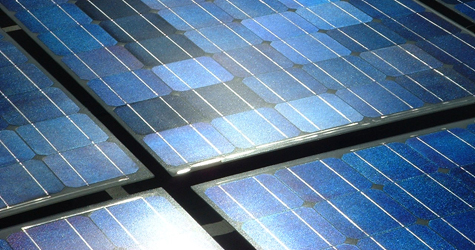Solar electric energy is arguably the most dynamic renewable energy source of today.
Averaging a 30 percent per annum increase in demand over the past 20 years, the solar photovoltaic (PV) market has quickly grown from relative obscurity and minimal applicability (most commonly known for charging pocket calculators) into large-scale industrial and electricity grid-integration projects.
While solar stocks have remained rather depressed so far in 2011, there is a concerted effort within industry, governments and in public opinion aimed at making solar a primary contributing electricity source within the next 20 years. As a result, the growth of solar energy, and solar PV in particular, will impact resource markets as companies and researchers re-engineer our energy system and the materials market that facilitates this transition.
Solar photovoltaic technologies
For simplicity’s sake, solar photovoltaic technologies can be separated by the type of semiconductor used. The first, and most common, form is crystalline wafers.
Crystalline silicon solar (c-Si) cells, constructed from crystalline wafers, are currently the heavy-weights of the PV market with between 80 and 90 percent market share. The c-Si cells are constructed with thin wafers (between 150 and 200 ųm) capable of producing 0.5 volts of electricity from the silicon’s exposed surface area, which are then soldered together in a series to produce a higher output voltage. Hermetically sealed under a weather-proofed glass, the cells last for about 25 years and provide the highest transmission efficiencies (typically between 15 and 17 percent, or about half to two-thirds the theoretical max) of sunlight energy into electric voltage.
Some companies, such as San Francisco based Crystal Solar, Inc, have developed new ways to produce silicon solar cells without the conventional silicon wafer. Developments like these are helping to reduce material and production costs of the c-Si cells, a trend common across the solar industry.
At this time, c-Si cells are typically used for large-scale applications and grid-integration projects over 50 MW. But despite the high efficiencies of the relatively (though diminishingly) thick c-Si cells, they have recently been usurped in their dominance with the growth of lower cost thin film solar cells which are a fraction of the thickness (approximately 1ųm thick) and often represent a similar fraction of the production cost.
These thin films are most commonly made of amorphous silicon (a-Si), but are also constructed of polycrystalline materials such as cadmium telluride, copper idium and diselenide. The selling point of thin film cells is its ease of application as the cells are produced on a variety of durable and malleable surfaces at lower costs which make them more accessible to smaller-scale applications.
However, these thin-film cells present a few challenges. Currently, the low efficiency levels and challenges with large-scale uniformity have made thin film cells less attractive for large-scale applications. US-based First Solar (NASDAQ:FSLR) is one of the obvious caveats to this critique, having recently completed one of the world’s largest solar cell projects at the 80 MW Sarnia, Ontario plant completed in partnership with Enbridge (TSX:ENB).
Source: Resource Investing News
Author: James Wellstead








